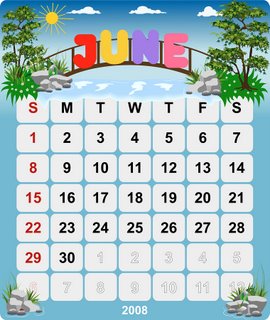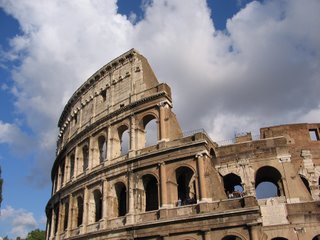Last week, I wrote about math. Later I realized that I’ve written about math many times, but was astonished to realize that I’ve never written about the study of history in Montessori (unless you count the Great Lessons article). And me a history major! For shame. Here’s my chance to rectify that oversight.
History in Montessori is an interesting subject, because we take the long view. The really, really long view. We start at the beginning of the universe and work our way up to the present day. That’s why astronomy is a subset of history, and why materials like the “Parts of the Earth” show up in the history category. We see history as everything that’s happened up until now, not just recorded human history (which is often how it’s defined in traditional education).
Moving from Primary to Elementary
 In 3-6, history falls under the general “cultural” label. Activities include the study of time (clock and calendar), celebration of the child’s own birthday (including the creation of a timeline of the child’s life), observation of the seasons, and introductory work about the earth, planets, and volcanoes. As you can see, there is a distinct emphasis on sequence and the passage of time. Grounding the child firmly in the understanding of days, months, and years gives them a head start on the study of historical events.
In 3-6, history falls under the general “cultural” label. Activities include the study of time (clock and calendar), celebration of the child’s own birthday (including the creation of a timeline of the child’s life), observation of the seasons, and introductory work about the earth, planets, and volcanoes. As you can see, there is a distinct emphasis on sequence and the passage of time. Grounding the child firmly in the understanding of days, months, and years gives them a head start on the study of historical events.
In 6-9, each new school year commences with the Great Lessons about the Coming of the Universe and Earth, the Coming of Life and Humans, and the advent of Language and Math. All of these lessons enable the child to see “the big picture” before learning about specific events and people. Also, the 6-9 child is able to understand more sophisticated concepts and ideas.
In 9-12, the child is truly ready to study history from an analytical and comparative point of view. They can be introduced to the ideas of revisionism and perspective; in other words, the way people change their interpretation of historical events over time. They are also ready to analyze and compare civilizations, countries, events, and governments.
Making History Materials
Some of the most successful history materials I made were timelines. In one case, I used a sticker book from Dorling Kindersley of the most important events in the past 100 years (I couldn’t find it online, or I would link to it). I put the stickers on cardstock and laminated them, and then laminated a long piece of paper (from an adding machine) and put Velcro every few inches, along with the years that the various events occurred. The kids would then put the stickers in order on the timeline. It was a huge hit.
I also try to use holidays to study historical events. This will vary by country, but here in the United States, I found that the birthdays of George Washington, Abraham Lincoln, and Martin Luther King Jr. lend themselves well to studies of the three gentlemen. By extension, you can also study the formation of the United States, the Civil War, and the Civil Rights movement at the same time.
 This spring, my son chose “The Roman Empire” as the topic for his research project. It was completely his choice, and never once did I mention that we were studying history. To him, it was just a fascinating subject. While the writing quality of the Magic Tree House books is dubious, the books do introduce children to a variety of historical settings. We didn’t learn much from the book where the children visit Pompeii right before Mt. Vesuvius erupts, but the accompanying research guide for Ancient Rome was full of interesting and helpful information, and the familiar format made it fun for my son to read.
This spring, my son chose “The Roman Empire” as the topic for his research project. It was completely his choice, and never once did I mention that we were studying history. To him, it was just a fascinating subject. While the writing quality of the Magic Tree House books is dubious, the books do introduce children to a variety of historical settings. We didn’t learn much from the book where the children visit Pompeii right before Mt. Vesuvius erupts, but the accompanying research guide for Ancient Rome was full of interesting and helpful information, and the familiar format made it fun for my son to read.
You may notice that there’s quite a bit of overlap between the curricular areas. For instance, in studying the Timeline of Life, the child will study plants and animals from the different periods. That naturally includes botany and zoology. The study of world events leads to information about geography and culture. This kind of overlap is natural, and desirable. It helps the child to have a comprehensive, integrated view of the world.
Some Suggestions for History Studies
1st grade:
Five Great Lessons
Parts of the Earth
Prehistoric Animals
Fundamental Needs of People
Concepts of Time (clock, calendar, telling time, BC/AD)
Planets, Stars, and other Astronomy Studies
Beginning studies of famous people (world leaders, artists, composers)
2nd grade:
Review of all of the above, but in more depth (the child doing some of their own research, for instance)
Timeline of Life Research (historic periods like Cambrian, Devonian, etc.)
3rd grade:
Review of all of the above, but in more depth (long term research projects)
Ancient Civilizations (Greek, Egyptian, Roman, Incan, Chinese, etc.)
Timelines of famous events (child’s own country)
4th grade:
Astronomy
Ancient Civilizations
Child’s Own Country (history, government)
World Events
5th and 6th grade:
A review of all of the above, at a more advanced level
Western Civilization
Systems of Government
Please note that every year, many of the same materials and presentations are repeated. The child will probably need to spend less time on materials they’ve done before (unless they decide to do some additional research on it) The benefits of repeating materials include:
1) Reviewing the material refreshes it in the child’s mind
2) The child has a chance to teach a younger child something they learned before about the subject
3) The child has a chance to bring new insight based on things they’ve learned since the last time they studied it
4) The child can bring their more advanced reading and writing skills to bear on the material
Also, please keep in mind that as with everything “Montessori”, these are just general guidelines and shouldn’t be strictly adhered to. Circumstances that influence when and how you study these subjects include the materials you have on hand, the children’s academic level, the children’s interest (or lack thereof) in the material, and possible state requirements you have to follow for testing or grading purposes.
Moving Past the Materials…
You might notice that for many of the topics I listed, there are no specific Montessori materials to study them. That’s okay! This is where the creativity of the children and the teacher come in. As I mentioned in the timeline idea, there are so many educational resources out there already: pictures, stickers, stories, flashcards, etc. Combined with the power of the internet, it’s fairly easy to find or make materials yourself.
Once children know how to research, they are free to go and learn on their own. Give them an encyclopedia or access to a safe computer (located in a public place) and let them go for it. No need to actually “create” any materials at this point.
In Montessori, we sometimes disparage workbooks and textbooks. Yet, I have found them handy for these sorts of studies. Workbooks can be cut apart and laminated to become hands-on materials. Textbooks can be used by the teacher as a guide to know what sorts of things to study. Sometimes I found myself reading aloud from a textbook to a group of children, pausing to insert additional info or to answer their questions. This keeps textbooks from becoming dull and boring.
Liven It Up!
I’m not sure why so many people dreaded history in school. Probably it was presented in a dreary way – with an emphasis on memorizing tedious facts and dates. I think history can be fascinating, especially when presented with the exciting backdrop of the beginning of the universe. Don’t make them memorize dates! Let them research the things that interest them. Throw in enough additional material so that they won’t have any “gaps”. Let them make dioramas, write plays, draw pictures, and anything else that livens up the past.

